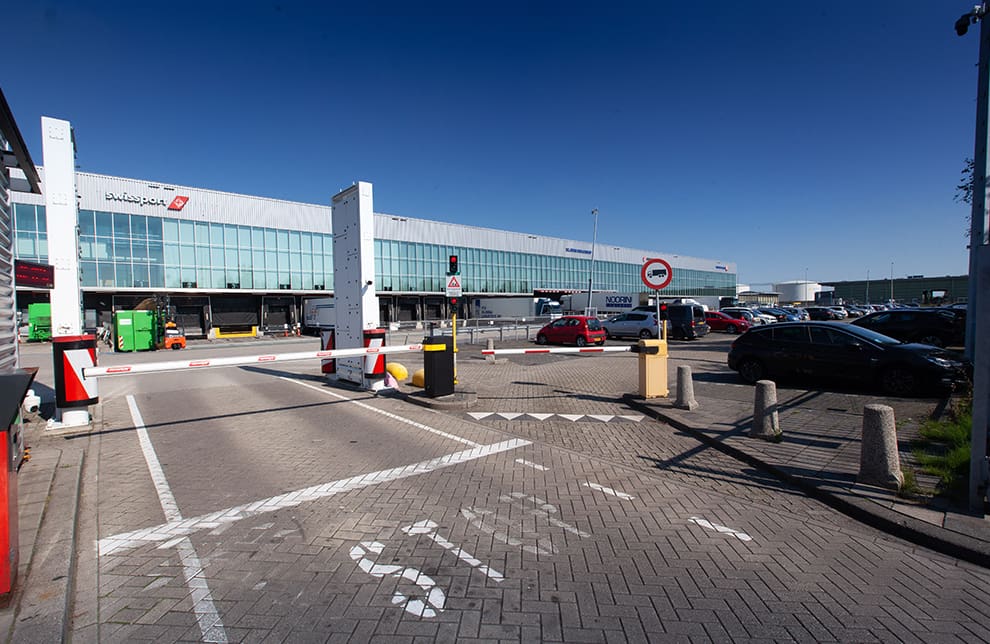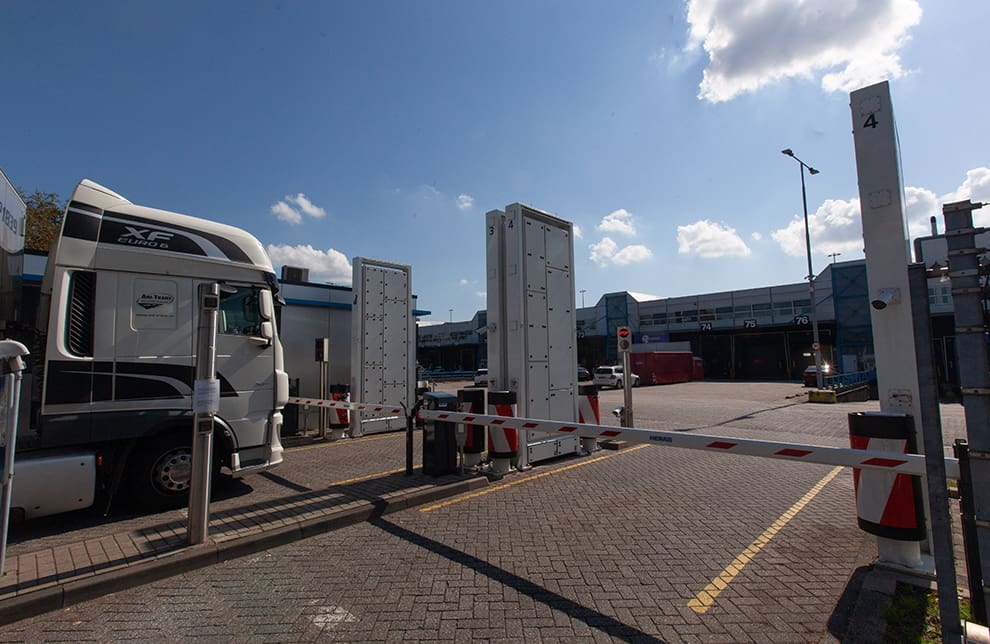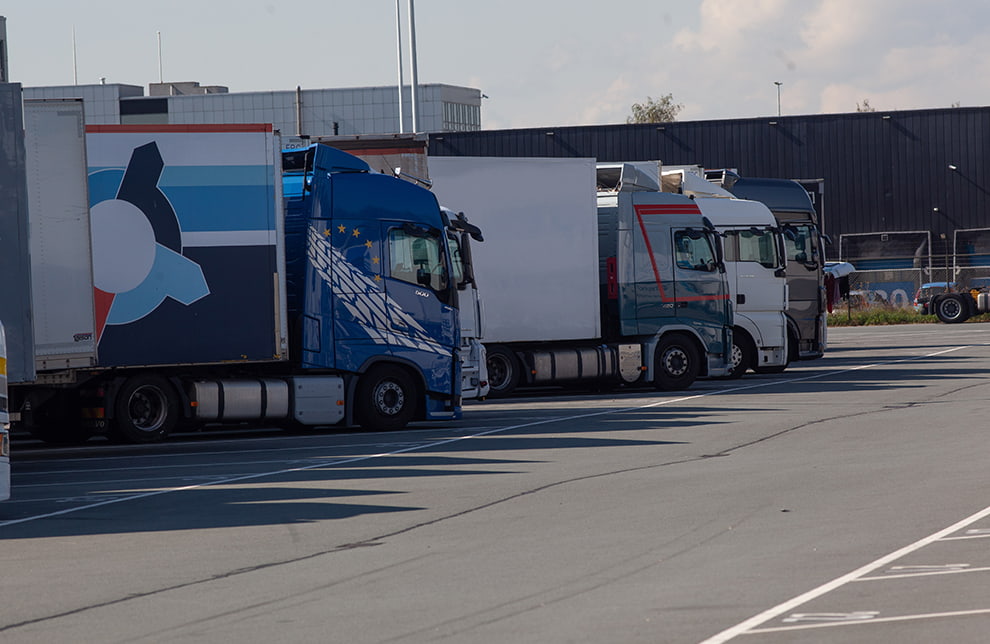Faster handling of export cargo : at Schiphol in 2021 with digital pre-notifications
From January 2021 the ground handling agents at Amsterdam Schiphol Airport will work with digital pre-notifications for export cargo. To this end Worldwide Flight Services, dnata, Air France KLM Martinair Cargo, Menzies Aviation Netherlands B.V. and Swissport Cargo Services all signed a document on Monday 14 September. The aim of the digitalisation is to make the delivery process, administrative processing and loading/ unloading of export goods at the airport more efficient, sustainable, safer and more reliable. Thanks to digital or electronic pre-notification this can be done without any personal contact which is nowadays an absolute necessity.


Jeroen Giling, Director Cargo at Swissport Cargo Services and Chairman of the ACN Sector Council Ground Handlers, gets straight to the point; the time for non-committal is past. “For us digital pre-notification is THE method to say farewell to the elements that slow down the sector. From January 2021 all handling agents at Schiphol will be working on this.” Collectively they are giving a clear signal that they are moving to an uniform system of electronic pre-notifications. And a promise for their partners: “Hauliers and forwarders who work with our system will receive priority in the handling process from 2021. You will be able to continue delivering export cargo in the traditional way but it will cost you more”, Giling underlines. The handling agents hope that this will fuel as many as possible of the estimated 150 active forwarders at the airport to work with the system.
Real savings on operational costs
The forwarder who does not digitally pre-notify export cargo will continue to face queues and procedures that can cause delays hours long, Giling warns. These delays bring operational costs that the forwarder or haulier cannot pass onto a handling agent or customer, adds Richard Visser. As e-Manager at Rhenus Logistics he focuses on innovation and is enthusiastic about the possibilities for electronic pre-notifications for the air cargo supply chain at Schiphol. Everyone recognises the many delays caused by the current method of working with physical cargo documents and checks: “It means parking, standing in the queue for the documentation counter and waiting without exception until it is your turn. Followed by waiting for the handling agent’s employee to check and confirm all documents. Only when everything has been found to be in order, is permission given to unload.” Visser calculates: “In busy periods the waiting time can be up to four hours. Per journey, with digital pre-notification, you can save two to three hours.” Haulier Rob Middelkoop of D.J. Middelkoop & Zn. also makes it clear to his colleagues: “Structural waiting times mean planning is unreliable which is detrimental to both the profit margin and quality. If you have six journeys but only three trucks, you have to rely on speedy handling of the loading/ unloading process in order to be able to satisfy delivery time restrictions.”
Transparent, reliable, error-free, fast and secure
The tool for the electronic pre-notification from 1 January 2021 is the eLink application. The eLink project falls under the umbrella of the Smart Cargo Mainport Program (SCMP). Hauliers, forwarders, ground handling agents, ACN and the airport are working together within the SCMP on projects to improve the efficiency of the airport. Paperless is the goal as digital cargo documents help manage cargo processes in a transparent, reliable, error-free, fast and secure way. “Alone you’re fast, but together you get further”, says Maarten van As, ACN Director, summarising the motto of the SMCP community.
Digital pre-notification is an essential step in the efficiency drive the Schiphol Cargo Community wants to take together. The transition to the new system is being prepared in the SCMP thematic group ‘Better Use of eLink’ which comprises hauliers, forwarders, handling agents and ACN. “Everyone who operates in the air cargo sector must take his responsibility for the chain and contribute. It can’t be the case that one party goes his own way between the rules.”
One swipe and the whole airport is informed of the pre-notification
Digital pre-notification is one of the essential jigsaw pieces in the puzzle of digital registration, authentication, identification and authorisation of export cargo for the transporter of the cargo who must deliver the goods landside. It is an automatic communication channel between, on the one hand, hauliers and/or forwarders and on the other hand, the handling agents at the airport. Hauliers and forwarders report their export goods electronically before the driver sets off for Schiphol with the consignment. Once at the airport after just one swipe of his ACN smart card at the card reader the chauffeur hears if he has passed the security check and is told to which dock he should drive for the unloading of his consignment. Van As: “In this way we want to bring an end to the queues of trucks and chauffeurs on the airport terrain. This has numerous advantages: less congestion, less CO2 emissions and, as Richard has sketched, drivers no longer crammed together in a small office waiting until their paperwork is processed. Given the situation around COVID-19, it is very important to have less personal contact now.” Moreover, digital pre-notification functions as a track and trace system; all the relevant authorities are, thanks to that one swipe, aware that the goods are at Schiphol and can therefore plan accordingly.
Thanks to digital pre-notification drive on via the fast lane
What does the new system mean in practice? According to Rob Middelkoop it is not rocket science. He explains it consists of two parts: “The first part is prior to delivery. We enter all the details of our consignments and its transport, such as our anticipated arrival time at Schiphol, the type of goods, customs formalities, the name of the chauffeur, etc. We do a check on five points and only if all the lights are on green, we set off.”
The forwarder sends the Freight Waybill to Cargonaut who ensures that the data is entered into the eCargo Receipt system. The forwarder links his truck details and preferred unloading time via eLink. In a later phase of the project this will have to work two-ways, the handling agent confirms the unloading time or suggests an alternative. As soon as the trucker arrives at the handling agent at Schiphol, the following phase commences with swipe of the ACN pass. “That is the check as to which consignments may enter the airport terrain and if they have RTI status (Ready for Take-In) which gives access to customs related information.’ As soon as the RTI status is agreed, the consignments are accepted in one go and the haulier can go to the handling agent’s dock for unloading. “Via the fast lane as the documentation counter is bypassed”, adds Middelkoop. Only in exceptional cases is an extra stop required to hand in physical documents.
Data quality and planning tool
As driving via the fast lane is not possible unless all the ‘lights’ are on green, the thematic group expects that digital pre-notification will also assist with data quality. Richard Visser of Rhenus: “You notify without reservation; there can no longer be any errors in the cargo documents, because everything is on green. Your cargo is customs cleared and also cleared in accordance with aviation security guidelines. And if the pre-notifications happen in a timely fashion and are done by everyone, then the handling agents will be able to plan very accurately”.
Planning to and after 1 January 2021
In the coming months the SCMP thematic group will be drawing up a protocol for the digital delivery of export documents. The members will also be examining the organisation of the definitive eLink infrastructure, Maarten van As advises: “We are building on and extending the system on the basis of an analysis of bottlenecks. The quality of data is so very important or rather, the uniformity of the entered data. We want to remove the risk of coding errors. After January there will be a period for roadshows where we (SCMP) will be visiting all the participating parties for evaluation purposes but also visiting others in order to promote the system so that we can scale it up further.”
Plug and Play solution
The aim is to present a web-based system in January, a portal where the user can log in and immediately organise the pre-notification of his export cargo. Cargonaut is building the platform, SmartLOXS is responsible for system identification and authorisation. The plug and play option will remove the need for parties to have to convert their own IT systems. Training for employees who will be doing the digital pre-notifications can also be easily arranged in this way. The months between 1 January and September 2021 will be an important transitional period during which hauliers and forwarders can join, take ownership of the system and during which period procedures can be further tightened up. “An approach of learning by doing”, Maarten van As recognises. “But by really getting started and putting in more capacity, we’ll move ahead faster. And, of course, we will also be thinking about digital pre-notification for other cargo streams.”
Issues of the day ever faster
Logistics is a sector where the issue of the day leads. Companies work fast, are solution-oriented and have little time for matters where the return is not immediately evident. The sector was therefore probably reluctant to implement digital pre-notification which has actually been possible for years in eLink. But, if all the ground handlers are working with one uniform system for digital pre-notification, the work group anticipates that the hauliers and forwarders will then begin to move. Richard Visser is convinced that, in any event, the penny will drop. “From January hauliers and forwarders will see their colleagues driving past them while they are stuck in the queue. Chauffeurs love to talk and the advantages of the system will soon get back to the boss.” He expects that after 2021 there will be a accelerator effect. The road feeders must also be enrolled. Visser feels that digital pre-notification has much to offer: “I hope that in the future we will be able to reserve slots at the handling agents. You arrive at 10:00 hours and by 10:15 you are on your way again. This is already possible with eLink, it is just a matter of turning on a check mark. This project is a first step in getting everyone involved.”
